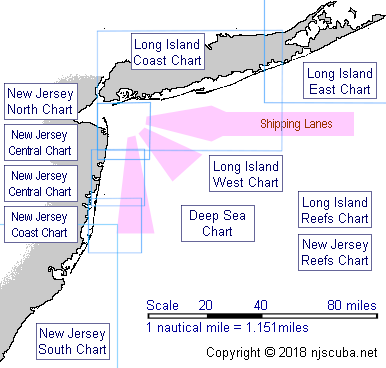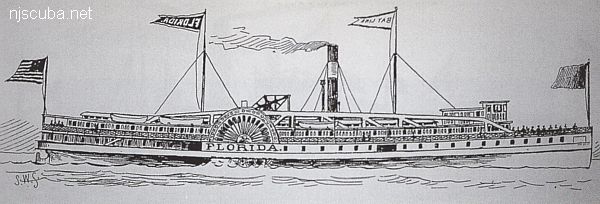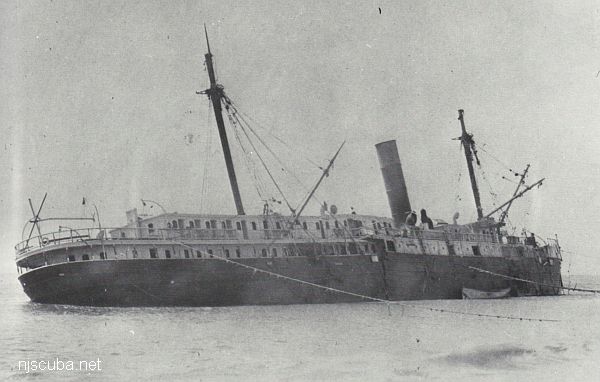Dive Sites (15/45)
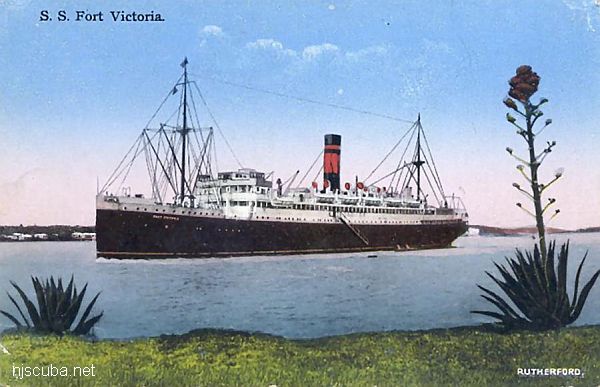
- Type:
- shipwreck, liner, Furness-Bermuda Line, Bermuda
- Built:
- 1913, Scotland, as Willochra
- Specs:
- ( 411 x 56 ft ) 7784 gross tons, 371 passengers & crew
- Sunk:
- Wednesday December 18, 1929
collision in fog with liner Algonquin ( see Mohawk ) - no casualties - GPS:
- 40°28.907' -73°54.398' (AWOIS 1991)
- Depth:
- 50 ft
More: Fort Victoria ...
- Type:
- shipwreck, clam dredge, USA
- Built:
- 2003, Panama City FL USA
- Specs:
- ( 86 ft ) 196 tons, ? crew
- Sunk:
- Thursday July 17, 2003
cause unknown - no casualties ? - GPS:
- 39°59.46' -73°11.25’ (NOAA 2003)
- Depth:
- 130 ft
More: Four Daughters ...
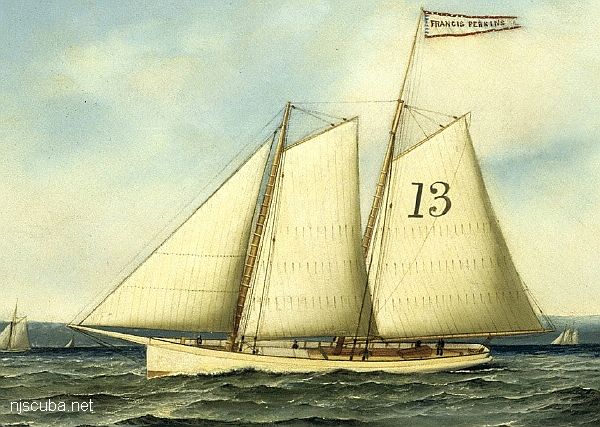
- Type:
- shipwreck, schooner, pilot boat, USA
- Built:
- 1876, New York, USA
- Specs:
- ( 78 x 20 ft ) 52 tons, 9 crew
- Sunk:
- Monday January 24, 1887
ran aground - 2 casualties - Depth:
- 80 ft
More: Francis A Perkins ...
- Type:
- shipwreck, sailing ship
- Depth:
- 140 ft
a "massive" wooden wreck, at first thought to be the Cayru
More: Galimore's Cayru ...
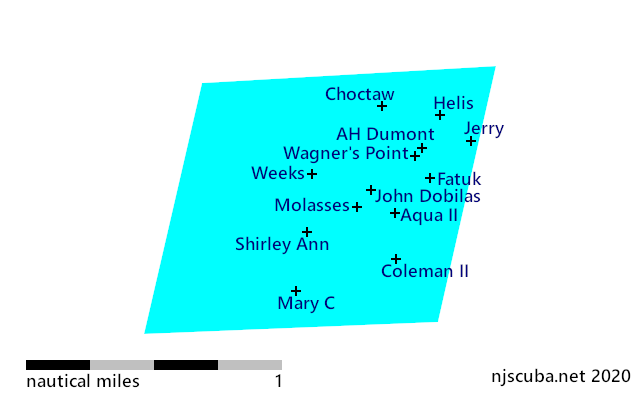
Depth: 65-85 ft
More: Garden State North Artificial Reef ...
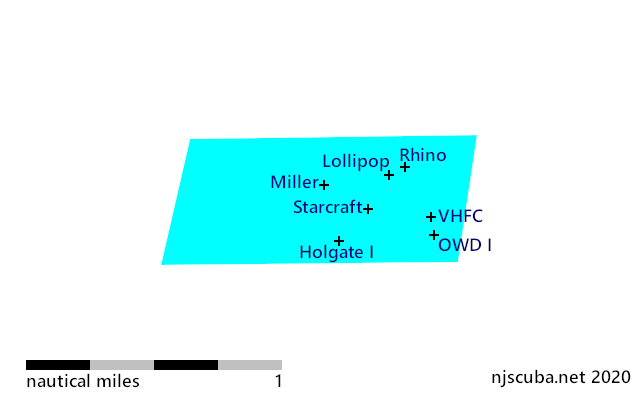
Depth: 55-65 ft
More: Garden State South Artificial Reef ...
- Type:
- shipwreck, schooner barge
- Depth:
- 80 ft
Another schooner barge or sailing ship. Close to shore and very near the Maurice Tracy. It is sometimes a second or third dive because of this. She's in 70 feet of water on a sandy seafloor. Lots of wood walls and some decking, it's been better for spearfishing lately rather than bugs, but that'll depend on when she was last dived. Named after the fishing boat that found the spot.
More: Gassoon ...

